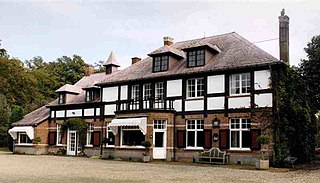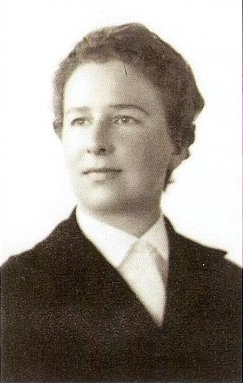
Jan van Eyck was a Flemish painter active in Bruges who was one of the early innovators of what became known as Early Netherlandish painting, and one of the most significant representatives of Early Northern Renaissance art. According to Vasari and other art historians including Ernst Gombrich, he invented oil painting, though most now regard that claim as an oversimplification.

Hubert van Eyck was an Early Netherlandish painter and older brother of Jan van Eyck, as well as Lambert and Margareta, also painters. The absence of any single work that he can clearly be said to have completed continues to make an assessment of his achievement highly uncertain, although for centuries he had the reputation of being an outstanding founding artist of Early Netherlandish painting.
Van Eyck or Van Eijk is a Dutch toponymic surname. Eijck, Eyck, Eyk and Eijk are all archaic spellings of modern Dutch eik ("oak") and the surname literally translates as "from/of oak". However, in most cases, the family name refers to an origin in Maaseik. This city on the Meuse, now in Belgium on the border with the Netherlands, was originally simply known as Eike and from the 13th century as Old Eyck and New Eyck. Names with an affix (tussenvoegsel), like Van der Eijk, are more likely to refer directly to the tree. This article lists people with this surname.

Arendonk is a municipality located in the Belgian province of Antwerp. The municipality comprises only the town of Arendonk proper. In 2021, Arendonk had a total population of 13,207. The total area is 55.38 km2.

Maaseik is a city and municipality in the Belgian province of Limburg. Both in size and in population, it is the 8th largest municipality in Limburg. The town is the seat of the administrative arrondissement of Maaseik (kieskanton). Internationally, Maaseik is known as the assumed birthplace of the famous Flemish painters Jan and Hubert van Eyck.

The Ghent Altarpiece, also called the Adoration of the Mystic Lamb, is a very large and complex 15th-century polyptych altarpiece in St Bavo's Cathedral, Ghent, Belgium. It was begun around the mid-1420s and completed by 1432, and it is attributed to the Early Netherlandish painters and brothers Hubert and Jan van Eyck. The altarpiece is a prominent example of the transition from Middle Age to Renaissance art and is considered a masterpiece of European art, identified by some as "the first major oil painting."

The Groeningemuseum is a municipal museum in Bruges, Belgium, built on the site of the medieval Eekhout Abbey.

The Royal Museum of Fine Arts Antwerp is a museum in Antwerp, Belgium, founded in 1810, that houses a collection of paintings, sculptures and drawings from the fourteenth to the twentieth centuries. This collection is representative of the artistic production and the taste of art enthusiasts in Antwerp, Belgium and the Northern and Southern Netherlands since the 15th century.

The Virgin and Child Reading is an oil painting of uncertain date. It is a mid-to-late 15th century imitation of the work of the Early Netherlandish master Jan van Eyck, possibly after a now-lost original painting by him from 1433 - another copy of the same work is now in the Colegiata church in Covarrubias, Spain. It is first documented in 1619, when it was in Sicily and then re-appeared in Charles Blundell's collection at Ince Blundell Hall near Liverpool early in the 19th century, meaning it is sometimes known as the Ince Hall Madonna. George Frederick Zink restored it there in 1922. It was acquired from the Weld-Blundell family by the National Gallery of Victoria (NGV) in Melbourne in 1922 using funds from the Felton Bequest.

The Van Eyck – Multiform Institute for Fine Art, Design, and Reflection is a post-academic institute for research and production in the fields of fine art, design and art theory, based in Maastricht, Netherlands. The academy was established in 1948 and was named after the painter Jan van Eyck. In 2013, 39 researches from countries around the world were working and studying at the institutes premises in Jekerkwartier. In 2012, the Hubert van Eyck Academie / Caterina van Hemessen Academie was established as a ‘teaching bridge,’ linking the Jan van Eyck Academie / Margaret van Eyck Academie with Maastricht University and other Maastricht art schools.

St. Donatian's Cathedral was a Roman Catholic cathedral in Bruges, Belgium. Located on the Burg, one of the main squares in the city, it was the largest church in Bruges. The cathedral was destroyed in 1799 in the wake of the dissolution of the Diocese of Bruges during the aftermath of the French Revolution.
The Campus Blairon is a business incubator, education site, local government site, medical post and a seminar centre located in Turnhout in the campine region of the Antwerp province (Belgium). Both the Artesis Hogeschool Antwerpen and the Katholieke Hogeschool Kempen are located on the Campus.
Rameyen Castle is a castle on a lake in Gestel, part of the municipality of Berlaar, in the province of Antwerp, Belgium. It was once owned by Nicolaas Rubens, Lord of Rameyen, who died in the castle. Nicolaas was the second son of Peter Paul Rubens.

Portrait of Margaret van Eyck is a 1439 oil on wood painting by the Early Netherlandish master Jan van Eyck. It is one of the latest of his surviving paintings, and one of the earliest European artworks to depict a painter's spouse. Completed when Margaret van Eyck was around 34, it was hung until the early 18th century in the Bruges Chapel of the Guild of Painters.

Léal Souvenir is a small oil-on-oak panel portrait by the Early Netherlandish painter Jan van Eyck, dated 1432. The sitter has not been identified, but his highly individual features suggest a historical person rather than the hypothetical ideal usual at the time in northern Renaissance portraiture; his slight and unassuming torso is contrasted with a sophisticated facial expression. His features have been described as "plain and rustic", yet thoughtful and inward-looking. The sitter was apparently significant enough a member of the Burgundian duke Philip the Good's circle that his court painter portrayed him.
Till-Holger Borchert is a German art historian and writer specialising in 14th and 15th-century art. He has been the chief curator of the Groeningemuseum and Arentshuis museums in Bruges, Belgium, between 2003 and 2014. In December 2014, he was appointed as director of the Municipal Museums in Bruges. In this role he initiated a radical reorganisation of the institution and laid the foundation for the renewal of infrastructure like the ticketing facility of the Gruuthusemuseum, a new storage, and the exhibition park BRUSK designed by architect Paul Robbrecht. In November 2021 he was appointed as new director of the Suermondt Ludwig Museum in Aachen, a position he resumed in April 2022.

Nicolaas van Eyck or Nicolaes van Eyck (1617–1679) was a Flemish painter active in Antwerp in the middle of the 17th century. He is known for his equestrian and battle scenes, landscapes and portraits. He also painted a few civil processions, including parades of the Antwerp civil militia.

Elisabeth Dhanens was a Belgian art historian specialising in Early Netherlandish painting. Dhanens studied art history at Ghent University at the Higher Institute of Art, where she earned a Ph.D in 1945. Her dissertation was a monograph on the early-16th century artist Jan van Roome, published in 1948. From 1945 to 1952 Dhanens was a researcher in Brussels at the Royal Institute for Cultural Heritage, where she worked in the documentation laboratory. From 1952 to 1976 she held a position as art inspector in East Flanders's Art Patrimony, where she collected inventories from churches for the government. Based on field work in Italy in the early 1950s she published a monograph about Jean Boulogne in 1956, which earned her an award from the Royal Flemish Academy of Sciences, Letters and Fine Arts and a year later a Fulbright scholarship - allowing her to study in the United States.

The Madonna of Jan Vos is a small oil panel painting begun by the Early Netherlandish artist Jan van Eyck c. 1441 and finished by his workshop after his death in 1442. As he died during the period of its completion, it is generally considered to be his last work.















